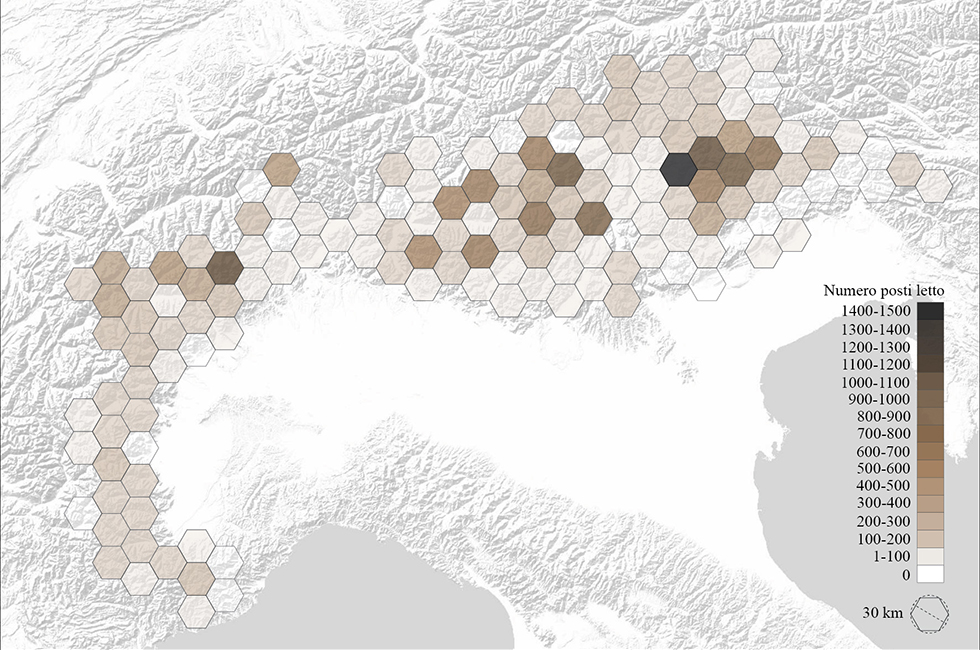Interpreting the Alpine Region over Time through the High-Altitude Network of Outposts
DOI:
https://doi.org/10.15168/xy.v9i15.3081Keywords:
climate change, georeferenced dataset, mountain hutAbstract
Mountain huts at high altitudes tell the story of the times and ways in which man has known the Alps. Originally created as shelters, today they make up a network of outposts that have developed on the mountains over time, reflecting the socio-economic changes in history. However, the current climatic context and the increasing degree of their use question the presence and role of these structures in a fragile context such as the high mountains. Developing future scenarios for high-altitude constructions requires in-depth knowledge of their evolution and their relationship with the territory. Georeferenced reconstructions, diagrams, and interpretive tools become the main support for analysing mountain areas to understand the development of the network of outposts over time, interpreting the dynamics of its use and its relationship with climate. Starting from the creation of an original dataset of 914 Italian Alpine huts above 1500 m a.s.l., identified through literature analysis, and from processing of the related geographic, altimetric, temporal, and receptive data collected, the article illustrates the evolution of the relationship between man and mountain through analytical and interpretive representations. By connecting this information with climatic and geo-hydrological risk data, the investigation suggests a method for constructing a knowledge framework, useful to develop future scenarios. The intersection of climatic, geo-hydrological, and architectural information provides a cross-cutting approach to understanding the Alpine region, useful for evaluating the presence and role of mountain huts and to highlight how, in the future, the network of high-altitude shelters could play a fundamental role in the strategies for the sustainable management of mountain territories.

Downloads
Published
How to Cite
Issue
Section
License
Copyright (c) 2025 Elisa Bernard, Massimiliano Condotta, Elisa Zatta

This work is licensed under a Creative Commons Attribution-NonCommercial-ShareAlike 4.0 International License.

